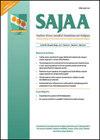Anaesthetic management for orthotopic liver transplantation in a patient with glycogen storage disease type IIIa
IF 0.3
Q4 ANESTHESIOLOGY
引用次数: 0
Abstract
any problems. General anaesthesia was maintained with 2% sevoflurane and 50% O 2 in the air, remifentanil infusion (0.01–0.5 μg/kg per hour) and rocuronium infusion (0.3 mg/kg). Proper ventilation settings were arranged. Gastric contents were suctioned. Since these patients have a low body temperature, we used a circulating-water mattress and a forced-air warming device to prevent hypothermia and followed up with a nasopharyngeal temperature probe. Haemodynamic changes were monitored with Pulse index Contour Continuous Cardiac Output (PiCCO) measured parameters, including stroke volume, stroke volume variation, pulse pressure variation and cardiac output. Fluid therapy was administered, guided by an algorithm depending on the PiCCO parameters. In total, 110 ml of the red Glycogen storage disease (GSD) type III is a metabolic disorder caused by a deficiency in amylo-1,6-glucosidase enzyme, which is responsible for the breakdown of the glycogen molecule, resulting in glycogen accumulating in the organs, hypoglycaemia, muscle weakness, liver dysfunction, delayed anaesthetic recovery, excessive surgical bleeding, cardiomyopathy and end-organ dysfunction. This case report presents a child with GSD type IIIa who underwent orthotopic liver transplantation (OLT) with her mother as a donor. A multidisciplinary approach should be provided to optimise the preoperative period and minimise complications in these patients.对一名糖原贮积症 IIIa 型患者进行正位肝移植手术的麻醉管理
任何问题。使用2%的七氟醚和空气中50%的O 2、瑞芬太尼输注(每小时0.01-0.5微克/千克)和罗库铵输注(0.3毫克/千克)维持全身麻醉。安排了适当的通气设置。抽吸胃内容物。由于这些患者体温较低,我们使用了循环水床垫和强制空气加温装置来防止体温过低,并使用鼻咽温度探针进行跟踪。使用脉搏指数轮廓连续心输出量(PiCCO)测量参数监测血流动力学变化,包括每搏量、每搏量变化、脉压变化和心输出量。在 PiCCO 参数算法的指导下进行输液治疗。糖原贮积病(GSD)III 型是一种代谢性疾病,由淀粉-1,6-葡萄糖苷酶缺乏引起,该酶负责分解糖原分子,导致糖原在器官中蓄积、低血糖、肌无力、肝功能异常、麻醉恢复延迟、手术出血过多、心肌病和内脏器官功能障碍。本病例报告介绍了一名患有 GSD IIIa 型的儿童,她以母亲为供体接受了正位肝移植(OLT)手术。应采用多学科方法来优化这些患者的术前准备期并将并发症降至最低。
本文章由计算机程序翻译,如有差异,请以英文原文为准。
求助全文
约1分钟内获得全文
求助全文
来源期刊

Southern African Journal of Anaesthesia and Analgesia
ANESTHESIOLOGY-
CiteScore
0.90
自引率
0.00%
发文量
10
 求助内容:
求助内容: 应助结果提醒方式:
应助结果提醒方式:


